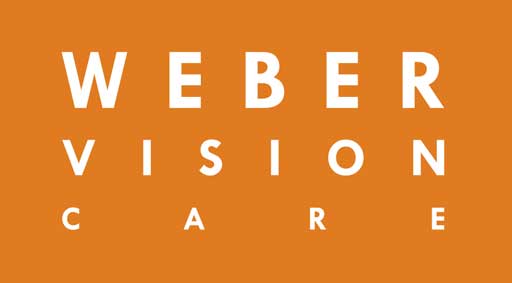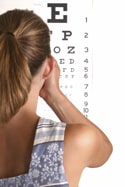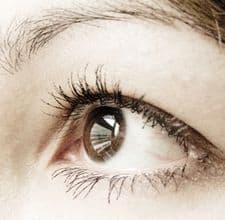
Eye Exams
At Weber Vision Care, your comprehensive eye and vision exam will include some or all of the following steps or procedures
Eye Examinations
Your History
- Your general health history;
- Any medication usage and allergies;
- Your family’s eye and medical histories;
- Specific vision requirements for your work or hobbies;
- The nature of any specific problem(s); and
- Your visual and ocular history

Preliminary Testing
During the preliminary testing, one of our optometric techs will check your visual function and ocular health by checking a variety of factors, including your pupil size and pupillary responses, your near point of convergence (the closest point of fixation just before the image becomes double); your stereo vision; and your color vision. We’ll also test you using a computerized auto refractor, which gives us your corneal measurements, used in contact lens fittings. It also gives us an estimate of your distance vision. We also might test your spectacles using our computerized lensometer, which lets us read the prescription in an existing pair of glasses.

Your Visual Acuity and Refraction
Slit Lamp Testing
Glaucoma Testing
Fundoscopy: About Dilated Eye Exams


Recommendations
Contact Lens Exams
Your Eye Exam for Contact Lenses
Before anything else, you should have a comprehensive eye exam for contact lenses. During this contact lens exam, your eye doctor will check your vision and determine the prescription you need. She’ll also check for any eye health problems or other issues that may cause problems with contact lens wear. Click here for a description of the comprehensive eye examinations we provide here at Weber Vision Care.Your Contact Lens “Talk”
The first part of the consultation is a discussion about with your lifestyle and preferences regarding contact lens options. We’ll discuss the options, and the advantages and drawbacks of various types of lenses for you including:- The choice between contact lenses that are designed to be replaced daily or those which can be worn for more extended periods.
- The choice between soft contact lenses for their ease and comfort and hard, or rigid gas permeable lenses, which have advantages in certain situations.
- The choice, if you need bifocals, between multifocal contact lenses or monovision (a prescribing technique where one contact lens corrects your distance vision and the other lens corrects your near vision).
- The choice between maintaining your eye color or selecting lenses that allow to change your eye color.
The Contact Lens Fitting
Our eyes come in different sizes and shapes, which means that a single contact lens size doesn’t fit all eyes. If the curvature of a contact lens is too flat or too steep based on the shape of your eye shape, it won’t be comfortable, and it even could damage to your eye. Your eye doctor will measure your eye kin the following ways to ensure the best contact lens size and design for your eyes.Trial Lenses
No matter how comprehensive the eye exam for contact lenses, most eye doctors will give you a set of trial lenses just to confirm that they are the right choice for your eyes. Most people wear trial lenses for at least 15 minutes so that any initial excess tearing of the eye stops, and your tear film stabilizes. With lenses in place, your doctor will use the slit lamp to evaluate the position and movement of the lenses as you blink and look in different directions; she’ll also discuss with you how the lenses feel.Contact Lens Class
Then, you will learn about how to care for your lenses and how long to wear them. You will also receive training on how to put in and take our your new lenses. While it may seem difficult at first, most people quickly learn how to contacts lenses.Your Prescription for Contact Lenses
Once you settle on the correct lenses for your needs, we’ll write a contact lens prescription for you. This prescription designates the contact lens power, the curvature of the lens (called the base curve), the lens diameter, and the lens name and manufacturer. In the case of GP contact lenses, additional specifications are included in the contact lens prescription.Follow Up Contact Lens Eye Exams
We’ll schedule a few follow-up visits so your doctor can confirm the lenses you chose fit properly and that your eyes are able to tolerate contact lens wear. Even if the lenses are working fine, you should schedule a contact lens exam at least once a year to make sure your eyes are continuing to tolerate contact lens wear and show no signs of ill effects from the lenses.